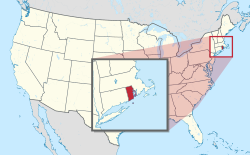History
The Narragansett Pier Casino was the center of social life in Narragansett during the late 19th century. The Narragansett Pier Casino rivaled the Newport Casino’s popularity as a resort for the social elite until it burned to the ground in 1900.
Built between 1883 and 1886, the Narragansett Pier Casino was a fine example of Victorian Shingle style architecture (a variation of Queen Anne style architecture in the United States), designed by McKim, Mead, and White. The Casino offered a variety of sports, including boating, tennis, billiards, bowling, cards, and shooting, restaurants, stores, reading rooms, a theater, a bandstand, a ballroom, and a beautiful beach. [2]
The Narragansett Pier Casino thrived during the Gilded Age until it burned down during the Great Fire of September 12, 1900. That day, a fire broke out in the neighboring Rockingham Hotel. The flames spread quickly to the Casino, leaving only the granite walls of The Towers standing. More recently Hurricane Sandy has uncovered the foundation and part of the old boardwalk belonging to the old casino that had been buried by sand.
Today, the Narragansett Towers are the only remaining part of the original Narragansett Pier Casino, having survived a number of fires, nor'easters, and hurricanes. It is one of the most recognizable landmarks in Narragansett. The Towers currently hosts weddings, dances, dinners, plays, and fashion shows. Its location adjacent to Narragansett town beach makes it an ideal venue for social events.
Narragansett towers attached to the casino, ca. 1885
Narragansett Casino ruins and lifeguard station, ca. 1905 after the fire destroyed most of the complex
In popular culture
Many events take place on the land adjacent to The Towers, as well as the land next door, where the Casino once stood, that now includes a lawn and a courtyard with a fountain. Events such as The Blessing of the Fleet road race and festival, local art festivals, the Lighting of the town Christmas tree, and many beautiful weddings.
The Casino at the Narragansett Towers is also the location of the first reports of the now-popular seafood dish "clams casino."
The Towers can be seen in the background of the Rhode Island–based cartoon Family Guy , episode "Peter's Got Woods," when Peter rides by on a tandem bicycle with James Woods, both engaged in song.
This page is based on this
Wikipedia article Text is available under the
CC BY-SA 4.0 license; additional terms may apply.
Images, videos and audio are available under their respective licenses.







